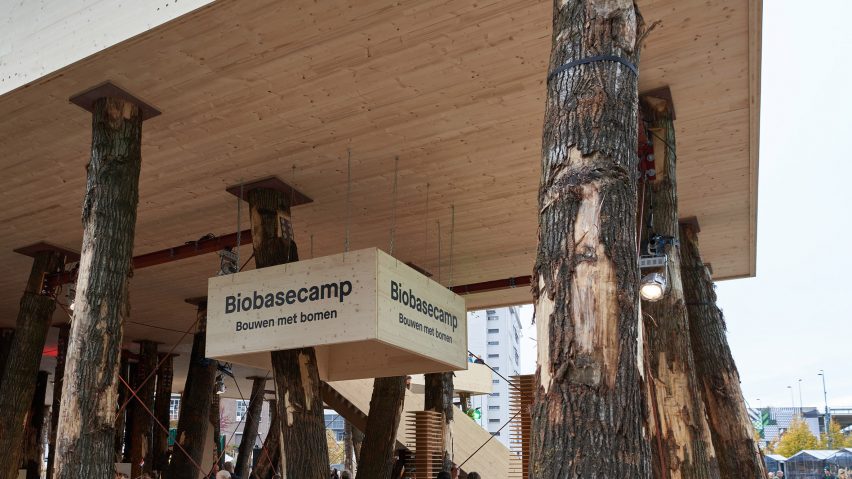
This week, the environment took centre stage at Dutch Design Week
This week on Dezeen, we reported from Dutch Design Week where a series of talks, installations and exhibitions tackled the role of architecture and design in both causing and fighting the climate crisis.
In a talk hosted by Dezeen's founder Marcus Fairs, a panel of architects including Thomas Rau, Marco Vermeulen and Overtreders W's Hester van Dijk discussed how a circular economic system could be integrated into their practices.
During the discussion, Vermeulen suggested that switching to timber as a locally sourced building material could prevent 100 megatons of carbon from entering the atmosphere while solving the Dutch housing shortage.
Meanwhile, local designers Atelier NL created benches from fallen trees for visitors to rest on.
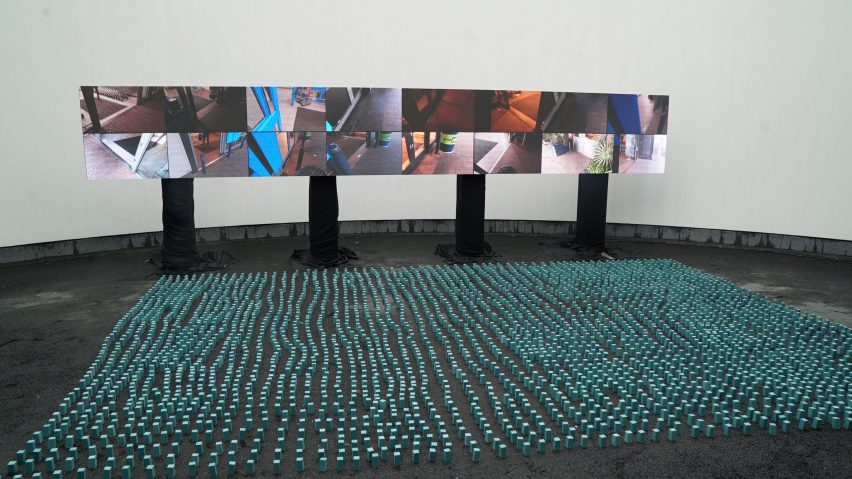
An installation by Amsterdam-based Studio Drift, condensed 3,000 plastic bags into an equal number of blue blocks, while an exhibition of work from Design Academy Eindhoven alumni explored the global scale of waste.
French designer Dorian Renard presented a series of undulating plastic furniture and sculptural pieces at the degree show of current Eindhoven graduates, that treat the material as something to be cherished rather than thrown away.
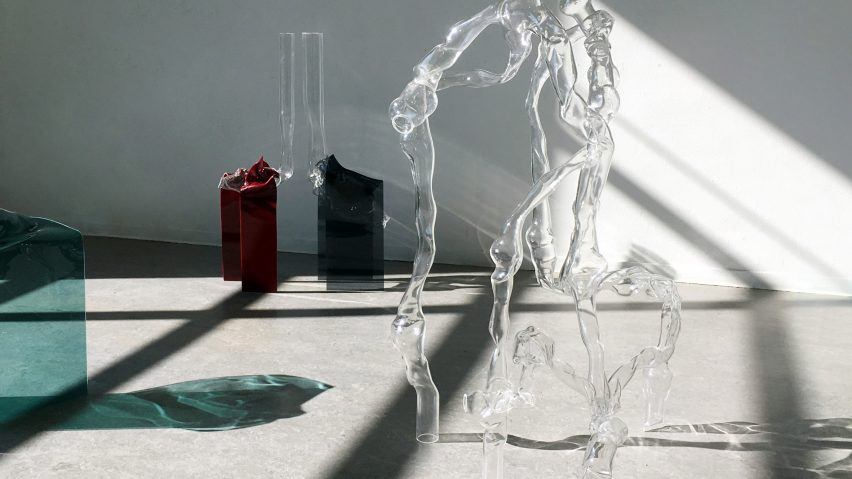
Elsewhere in design, alternatives to plastic in the fashion industry were explored as Native Shoes created a trainer from algae-laced foam, whilst Japanese start-up Spiber and The North Face Japan brought a jacket made from artificially emulated spider silk to market for the first time.
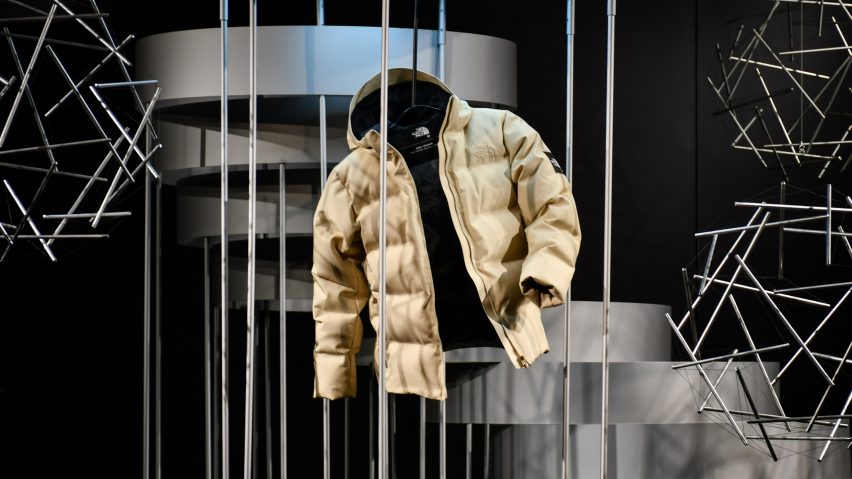
Over in America, architects reached for the stars with their work on a number of skyscrapers. Foster + Partners completed the Comcast Technology Center, which at 341 metres tall is now the highest building in Philadelphia.
Meanwhile Gensler unveiled plans to give the lobby of the AT&T building – a New York City high rise originally designed by postmodern architect Philip Johnson – a bright, minimalist overhaul.
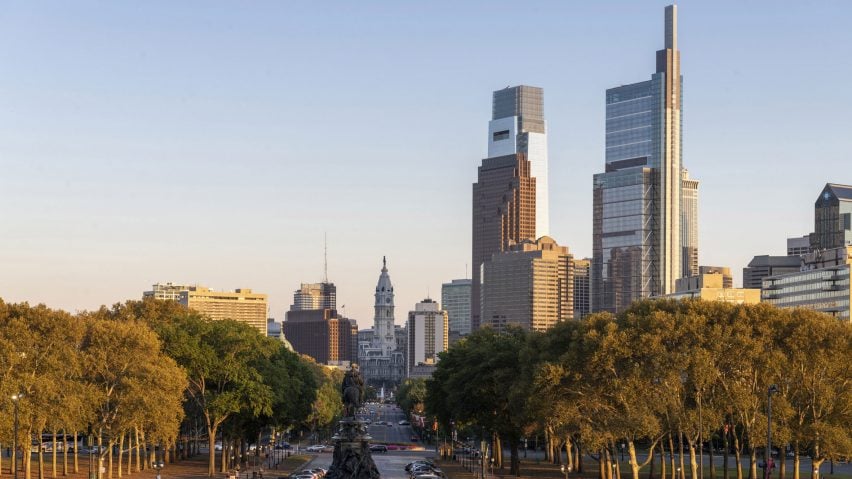
In other architecture news, a water garden created by Junya Ishigami, has won the inaugural Obel Award. The artificially created landscape, consisting of 318 trees encircling 160 miniature ponds, acts as an example of how human intervention can enhance, rather than damage a natural landscape.
Nature was also elevated from backdrop to protagonist in a number of buildings that are intimately engaged with their surroundings this week.
A Wheeler Kearns-designed home lies close to the ground in a ravine, with large windows offering unobstructed views of the forested property beyond, while a series of surf villas by architect Alexis Dornier combine natural materials with indoor-outdoor living spaces.
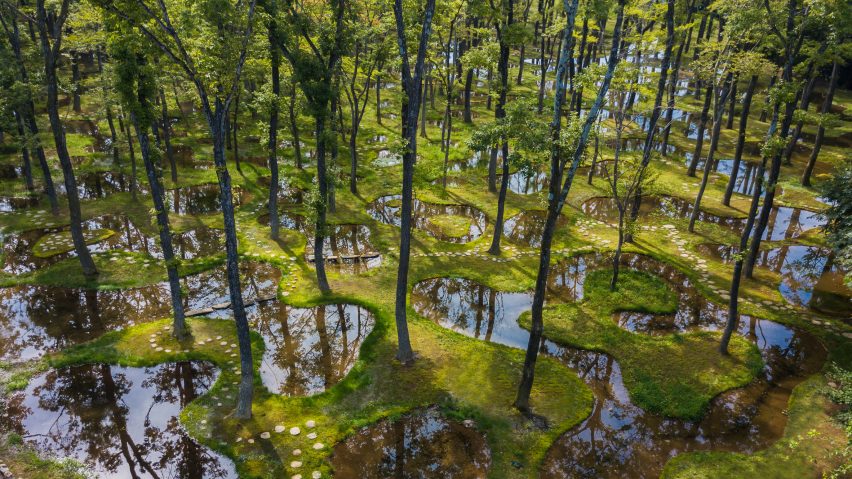
In other industry news, Dezeen revealed this week that London's Design Museum had to be rescued by a £3 million loan, given by its founder Terence Conran via his charity.
Perhaps equally inauspicious is the claim, made by New York designer Sebastian Errazuriz in a series of Instagram videos, that artificial intelligence will put all but five per cent of architects out of business.
As one example of the kind of tech that would lead to the profession's demise, he referenced a parametric tool created by Wallgren Arkitekter and BOX Bygg, which that can automatically generate adaptive floor plans.
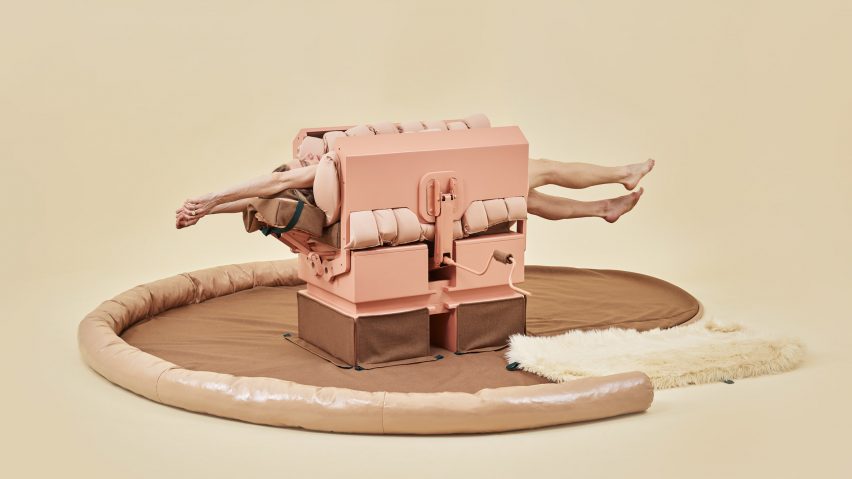
Other popular stories this week included Banksy's online shop opening for business, a hugging machine hoping to fight the loneliness crisis and Barbie's Malibu Dreamhouse being listed on Airbnb.